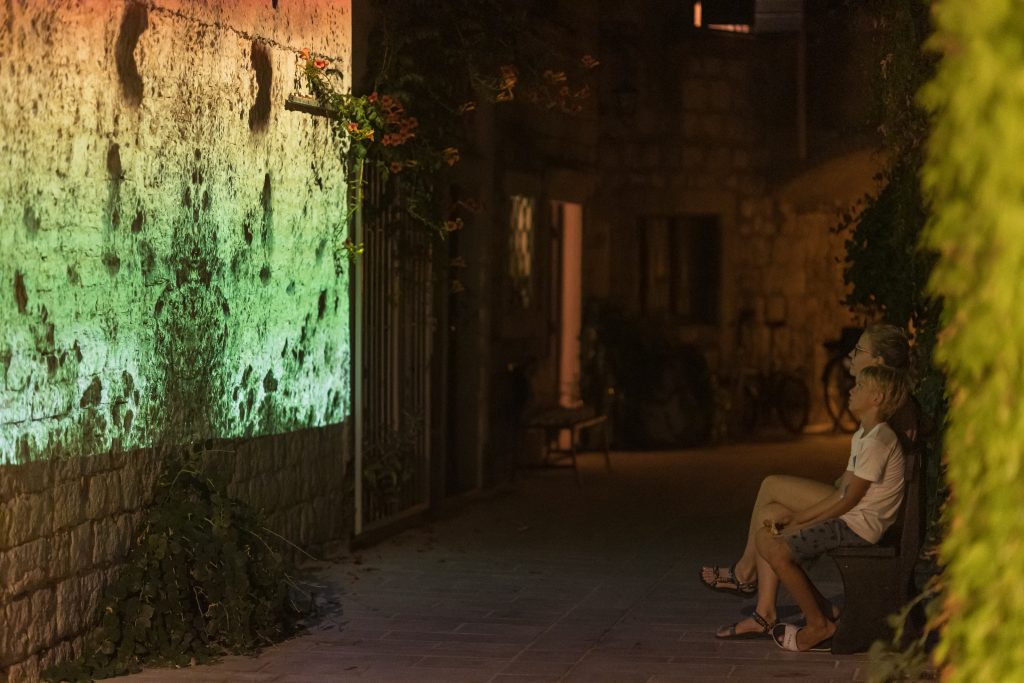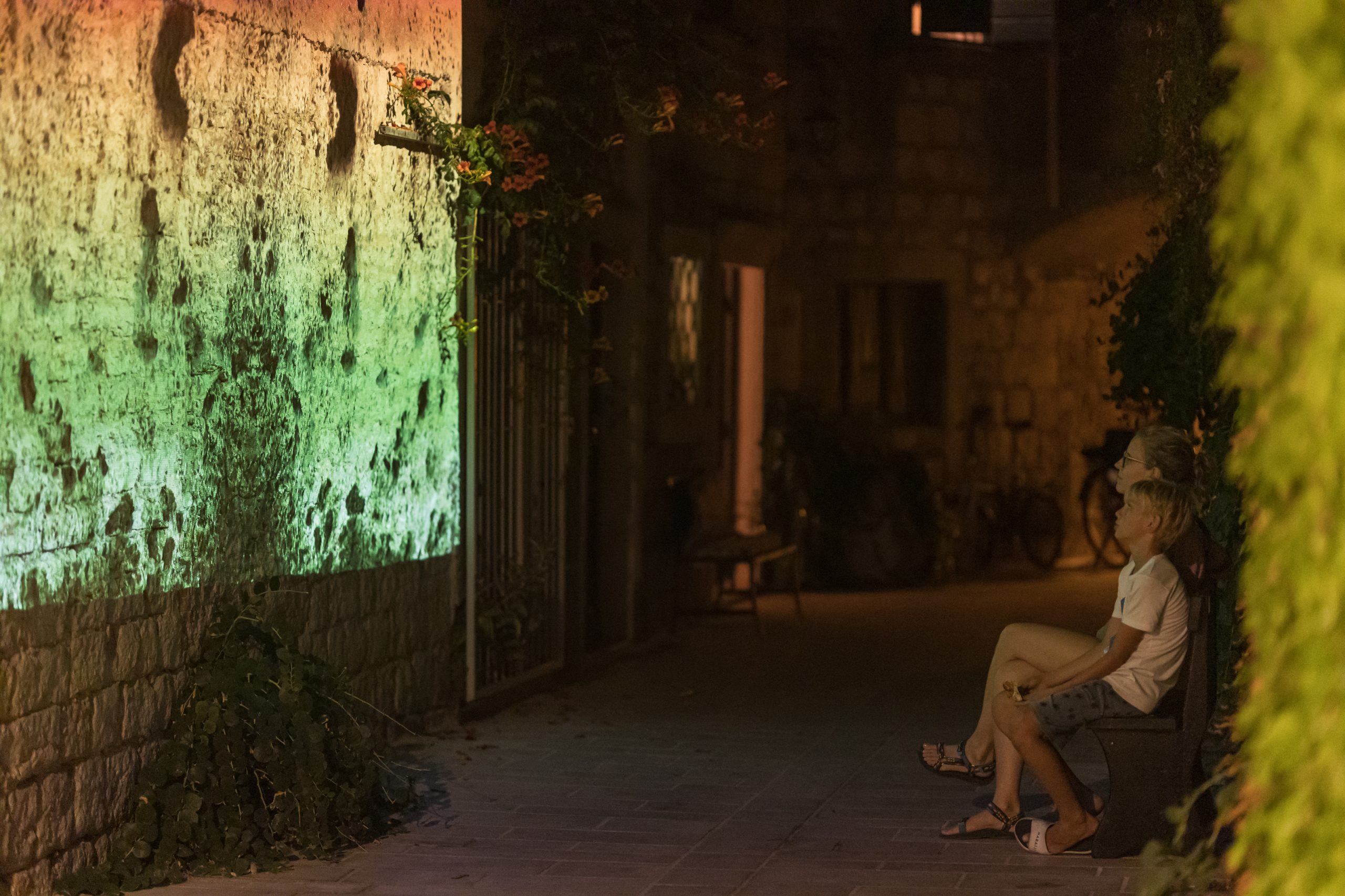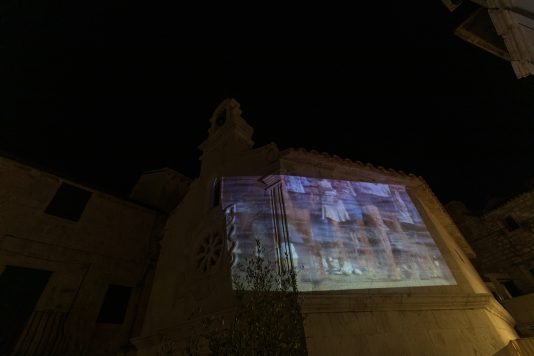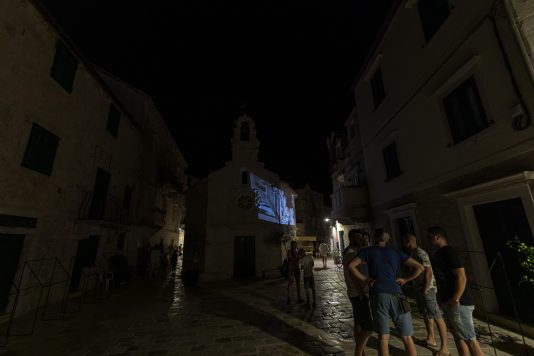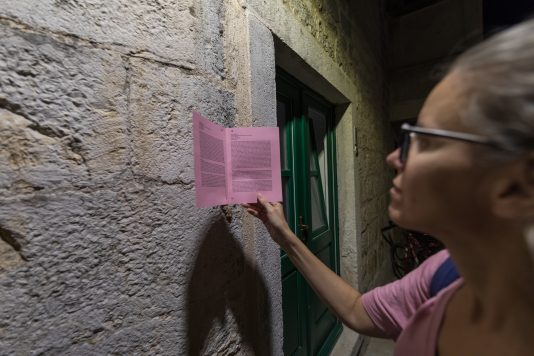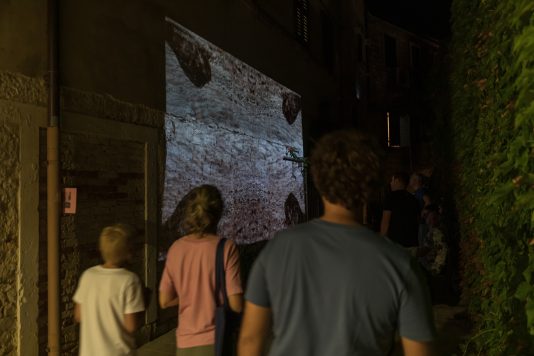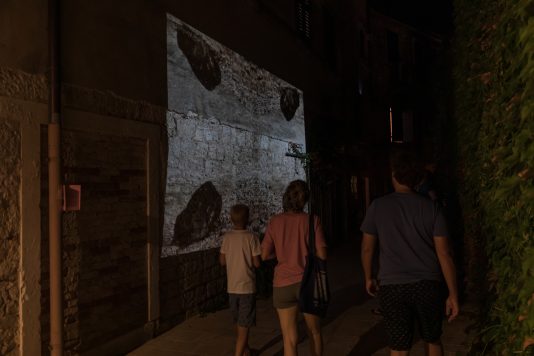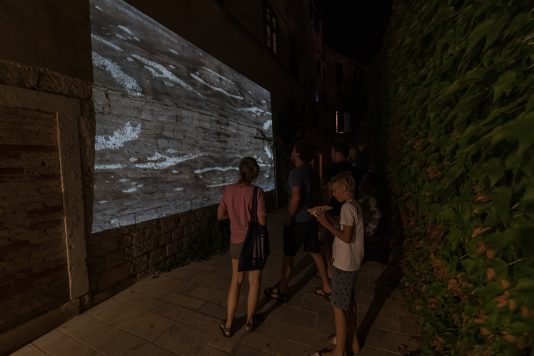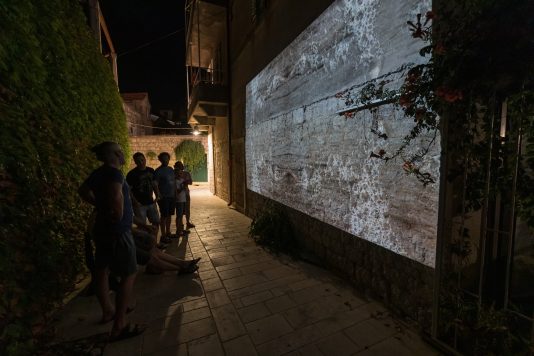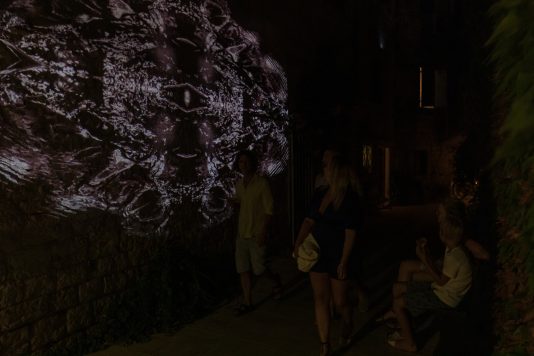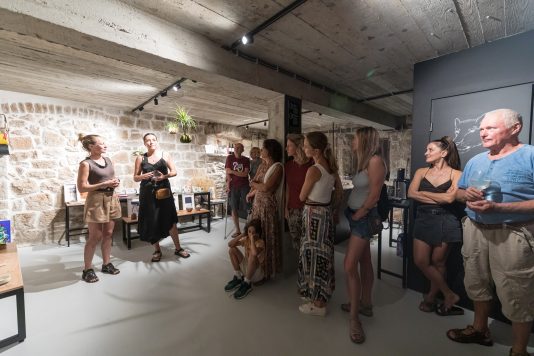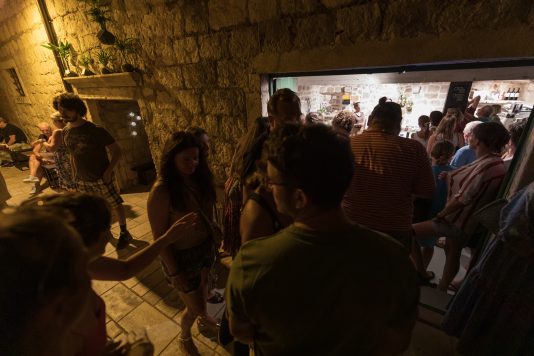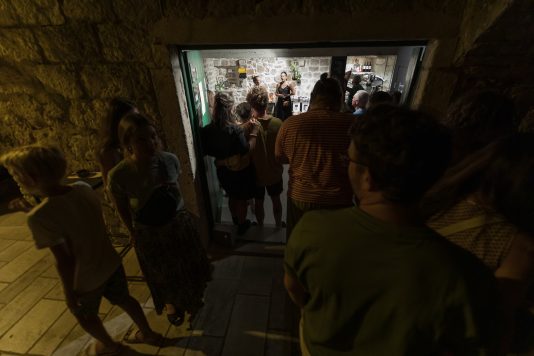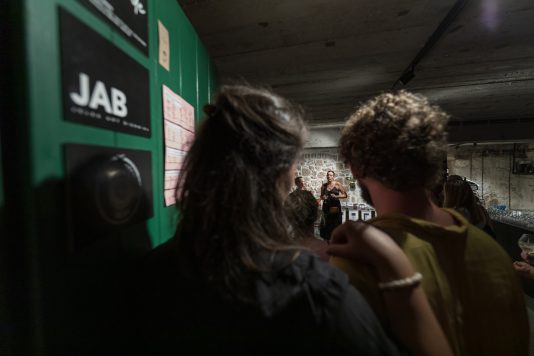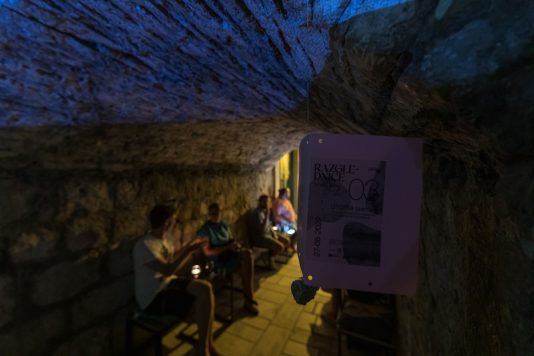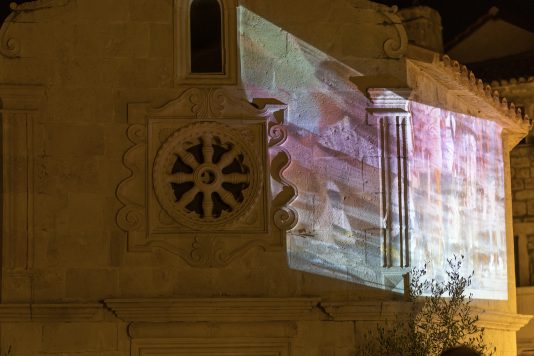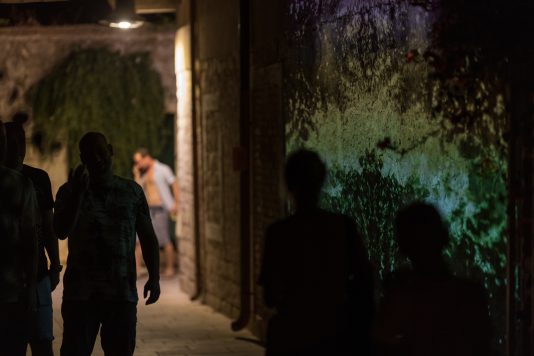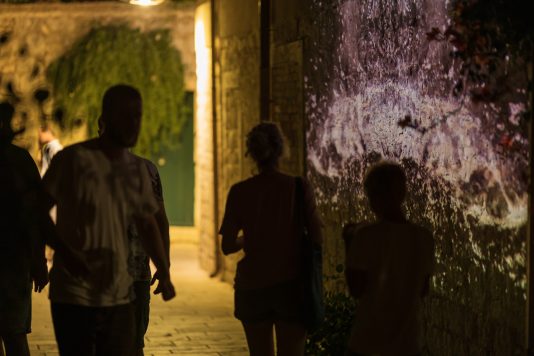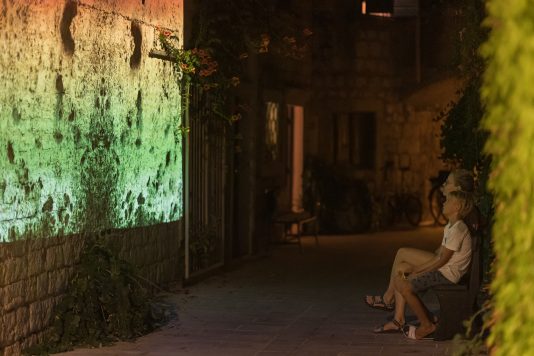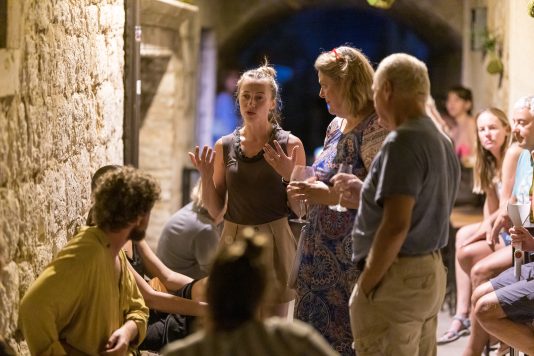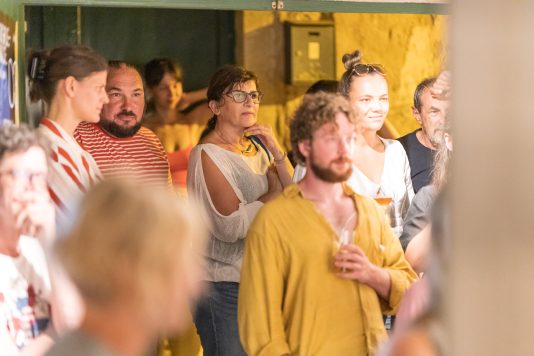JOSIPA SLAVIČEK
Context
The global context of this year’s programme is shaped by the need to react to the war in Ukraine and the ongoing concern about the global environmental crisis. Locally, our focus was on the creation of the new space of artistic production in which Lab852 was involved – Monade Gallery in Jelsa, Island Hvar, as a home of the main cultural event that we produce – Jelsa Art Biennial.
The space is in the historical centre of the town and as such it is a protected cultural asset. In terms of use, the space historically functioned as a food storage, and later as wine making and storage space. Due to its primary function (cooling, drying), the space is buried practically below the sea level and located in the “Kala” – a street in the grid of a Mediterranean city and according to more consistent urban plans, placed favourably in relation to the direction of the winds. Entrance from the street added a public and social function to it in the season of grape harvest and wine production when interactions were spontaneously happening in an open-door manner.
More recently, because of the fragmentation of the family property and changes in its functions brought by the mass tourism, the space functioned as a storage space for the surrounding businesses. Air conditioners, ventilation and garbage depot began to dominate the view of the kala and with the seasonal suspension of traffic on the waterfront (the parallel main street), all motor traffic of the place spontaneously moved to the kala, despite the bans. It negatively affected the safety of pedestrian traffic and the quality of life of residents. These circumstances resulted in conflicts between different users, which was important to take into account when designing a new use for the space and planning the program.
Taking into consideration the needs of different users of the inner private space (local environmental association, contemporary art production company and commercial business) as well as the outer public space (pedestrians, residents), architect Zdravko Krasić designed a space that has the possibility of functioning as a gallery, bar, shop, space for workshops and lectures. With the design of urban furniture that enables the simultaneous retention and passage of pedestrians, a balance was created between the private and the public use of this extremely limited space, which at the same time completely cancelled motor traffic through the street.
Architect Josipa Slaviček approached the space theoretically and, as part of this year’s activities and did preliminary research on the context of program development. Sustainability and circularity reflected in the ability of the space to programmatically adapt to seasonal changes and different types of users was also a conceptual basis of the exhibition program, used by artists in residence for their work on site specific projects. From this point of departure and taking into account the context of the space, its historical tasks, current state and vitality, the exhibition program leaves the very framework of the gallery and spreads along the street to the benefit of all residents and passers-by.
Program Postcards
Within previously mentioned context, program Postcards was developed to encourage research and evaluation of the lesser-known elements of the local heritage of Jelsa and the island of Hvar and their (re)interpretation outside of the usual tourist-commercial narrative. Using the very idea of a postcard as a format for presenting a place to “others”, the aim was to strengthen the sense of the local identity based on the richness of one’s own cultural and natural heritage, traditions, relationships, and community practices that contribute to their preservation and development. The program started with an Open Call for artists in June and consisted of four exhibitions that were results of four residencies during July, August and September. Including local community in every designed activity, and running parallel to the main part, the program was accompanied with two thematic walks with expert collaborator, an interactive shadow hunt on the island and Kids2kids workshop. The entire program took place in the year prior to Jelsa Art Biennial. As such, it was part of the process to develop a concept for Jelsa Art Biennial 2023.
Postcards 03_Utopia san se
As Josipa did the preliminary research on the space in the context of program development, it was clear that the focus of her work was going to be the space itself intertwining with her artistic expression that deals with the coexistence of nature and man with social responsibility of island issues. Actually, when we look up at the night sky, observe the universe and wonder what else is out there, we sometimes forget how much we still have to explore on the planet we live on. We know more about the space we see than about the complex sea which makes our island an island, separating it from its neighbours but connecting it with everyone else. “Put your finger in the sea and you will be connected to the whole world”. Because of its invisibility, unpredictability and complexity, we need detailed research that would awaken our senses and evoke the unknown worlds of water. With the name of the exhibition “Utopia san se” (a play with words, utopia meaning an imagined place or state of things in which everything is perfect; utopia: Cro., dialectically, to drown + san se: myself), authors Josipa Slaviček and Francisca Rocha Gonçalves (SINØ) want to draw attention to the issue of the rising of sea levels, which is predicted to reach a height of 1 meter by 2100, and 5 meters by 2150. With their video and audio installations, they intervene in the space of the kola (street), submerge it with the symbolism of water to evoke the ambiance of the utopian water world that we can expect if, as an island community, we do not start to question man’s (in)action on the sea and the coastal area. The video visuals are inspired by the elemental properties of water such as motion, specularity and reflection of light, and the human influence on changes in the sea using digital manipulation as a direct artificial influence on the nature of things. What we hear are underwater sounds that, due to the physical properties of water, can be recognized even at great distances, with marine animals using them intensively for communication, navigation and hunting. They were recorded with hydrophones sensitive to the vibrations created by people near the sea with their machines and vehicles, causing underwater noise that affects the organisms responsible for creating the balance of the ecosystem.
Josipa Slaviček graduated in architecture and spatial planning at the Faculty of Architecture in Zagreb, her field of scientific research involves islands and island issues. In her artistic work, she uses the media of spatial interventions and visual arts through which she tries to raise awareness of the coexistence of nature and man, social responsibility, states of consciousness and emotional intelligence. By using digital manipulation as a direct link between the real and virtual worlds where different rules apply, and through creative expression the artist wishes to bring people closer to the vision of the possibilities of the world that surrounds us.
Francisca Rocha Gonçalves is a researcher and artist from Porto. Trained in the field of biological sciences with a degree in veterinary medicine and a multimedia master’s degree in interactive music and sound design, her artistic practice combines interests in sound, technology, art and science. In her research, she focuses on acoustic ecology as a tool for raising awareness of the soundscapes of seas and oceans. By developing artistic artifacts that reveal the problem of noise pollution in the underwater environments, Francisca understands changes in the vibrations and movement of particles, vital components in marine habitats. She is the co-founder of the art collective Openfield Creative Lab and the project Ocean Soundscape Awareness – ØSAW. She lives and works in Berlin.
Text written by Jelena Mićić
